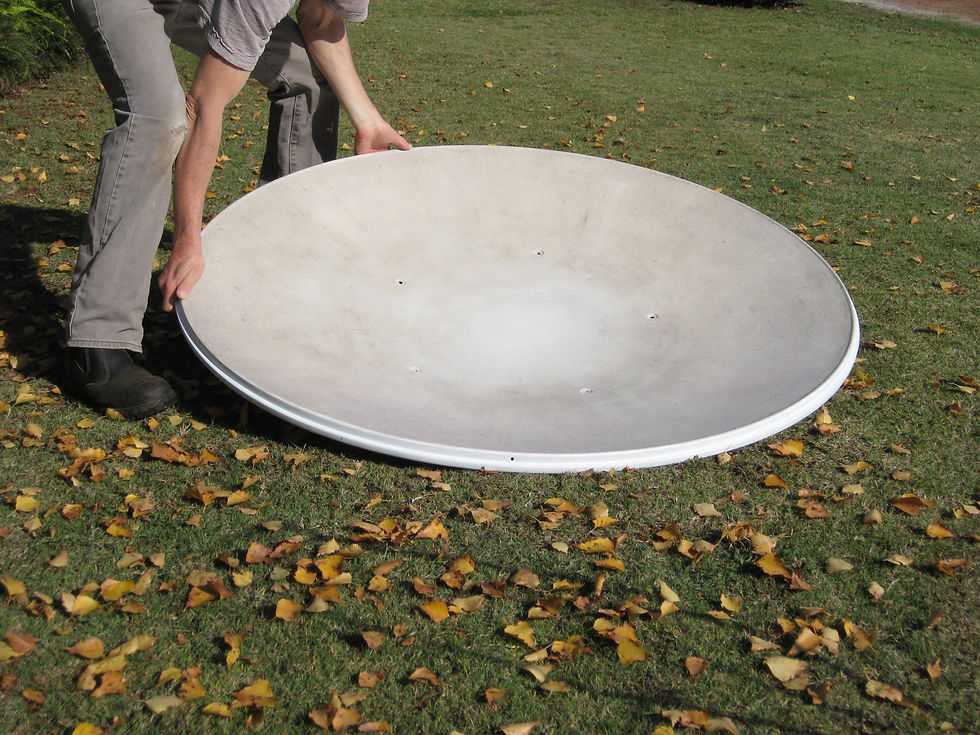'FOVEAL': rays of light

This is the satellite dish during its makeover for the Bunbury Biennale. Turning the object into art justified my hoarding. But the dish was also the perfect ‘found object’: I wanted to follow up the recent Control Point artworks with a new piece that warped the flat image into something sculptural.
Thinking about the dual role of the dish as both a receiver and reflector of information became my light-bulb moment: here was a ‘readymade’ curved picture plane on which to mirror the image of the ash-cloud…

This brought it all back to how we see. I remember reading that the ancient Greeks thought we saw things by means of our eyes projecting rays onto an object. We know now with smug hindsight it is the other way round; light rays reflected from the object enter our eyes. Sounds simple, but when you consider that only a mere pinpoint of sharply focussed information hits the retina’s hotspot, the fovea, then how on earth do we see the whole thing?! By scanning: the eyes move. Bit by bit, the brain amazingly sorts all these snippets of information and builds up the big picture in complete comforting clarity. I find it a humbling - and a tad disturbing - realisation that our sense of visual reality is in fact mostly an illusion!

As an example, look at a picture, or a photograph, like the one above of the dish and ash-cloud. It appears whole; we see it all from edge to edge. Now try holding your focus on just one central point. The rest is now blurred, peripheral. The brain makes sense of the fuzziness through memory and knowledge.
We also know the photo is a rectangle, that convenient and conventional shape for a picture. And when we scan the built-up 3D world around us, there are more rectangles out there. A common problem in observational drawing is to try and blend what we see with what we know: a rectangular table-top seen on angle can easily end up drawn somewhere between the thin sliver actually observed and the shape we know it to be because of this inner conflict. The table's lines are really parallel but the lines should taper on paper. Next challenge: are they actually straight lines? We know the table's are, but extend the rules of perspective and the old logic crumbles when drawn. There’s a good argument for curvilinear perspective: it’s just a lot harder to draw! My conclusion so far comes back to this battle between perception and knowledge: we draw the picture our brain ‘knows’, not always sees.





















